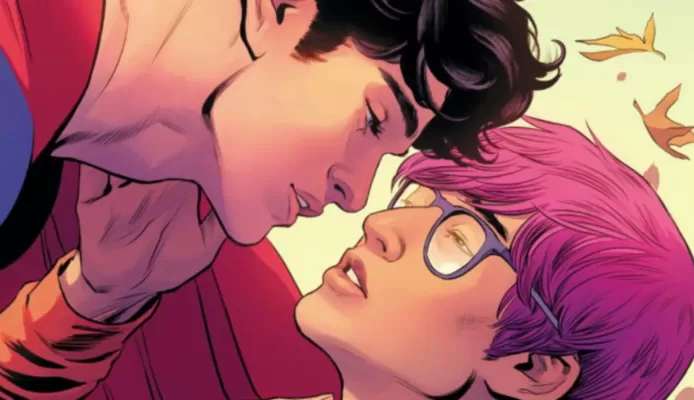The most recognizable of superheroes emerge from the shadows. Superman (or rather, his son) has a love connection with a guy in his most recent comic. Experts in the media and LGBTQ+ advocacy groups are cautiously hopeful. ‘I’m hoping he goes for more than a little kiss.’
In the superhero world, relational diversity has long been a problem. In recent years, both Marvel and DC Comics, two publishers of superhero characters, have experimented extensively with the sexual inclinations of its superhuman workers. Marvel published Northstar in the early 1990s. Batwoman makes no secret of her passion for women in DC Comics, while Batman’s usual sidekick, Robin, just came out as bisexual. The coming-out of Superman, who is at the top of the superhero food chain, is on a whole other level.
Although DC Comics, who broke the news of its frontman’s new love affair at the start of this week, is still treading carefully. After all, this isn’t the original Man of Steel stepping out of the closet with the required drum roll.
Today, Jonathan Kent, dressed in blue spandex, rescues the world from every kind of peril. And, as shown by the comic book Superman: Son of Kal-El, which is entirely reliant on him, Jonathan has a more vocal personality than his father.
The New York Times quoted Tom Taylor, the series’ creator, as saying, “It would be a lost opportunity to replace Clark Kent with another straight white hero.” According to him, the new Superman must be present in the actual world in order to face new challenges. So, unlike his father, Jonathan is worried about the environment, avoids contentious political topics such as high school shootings, and in his next adventure will kiss Jay Nakamura, a kid he met in one of his earlier albums.
One would understand a technique that has been employed before. For a long time, the major comic book companies have understood that their superheroes aren’t only for geeky guys. They aim to reach out to as many people as possible. And the only way to do it is to include the essential variety in their tales.
Anyone aiming for a broad audience, on the other hand, does not want to upset anyone. As a result, the LGBTQ+ characters that appear are seldom the most well-known. When this occurs, the creators maintain a cap on the arm by allowing Superman’s kid to come forth rather than Superman himself.
This caution also explains why superheroes are mostly seen in comic books. These comics are aimed for a more specialized audience. Anyway, an audience that is more receptive to variety. Just look at how much slash fiction about Batman and Robin has been published. Stories created by fans about gay relationships between fictitious characters.
Furthermore, such books are less monetarily significant than the cinema ventures for which DC Comics and Marvel have the personnel. Those are the true cash cows. Superhero films are very popular throughout the globe, and the studios who produce them want to maintain them that way. Which guarantees that the heroes’ sexual inclinations are carefully pushed under the rug. For film studios, a nation like China is a big market. And an LGBTQ+ figure may be misunderstood.
Marvel discovered in 2019 that not everyone in Russia is excited about diversity. One of the male extras in Avengers: Endgame talks about his date with another guy. As a result, he became the first openly homosexual character in a Marvel film. The word ‘date’ was removed from the dubbed version in Russia, which was a first.
If Marvel and DC Comics are serious about diversity, they will have Superman kiss a guy on the big screen as well as on paper. The next stage is an LGBTQ+ superhero who can also be himself on the big screen. Until that moment comes, what’s going on now will just be window dressing. However, no matter how planned the initial moves toward diversity in the superhero world are, their symbolic significance cannot be overlooked. It is critical for adolescents and young people to identify with role models in popular culture.
